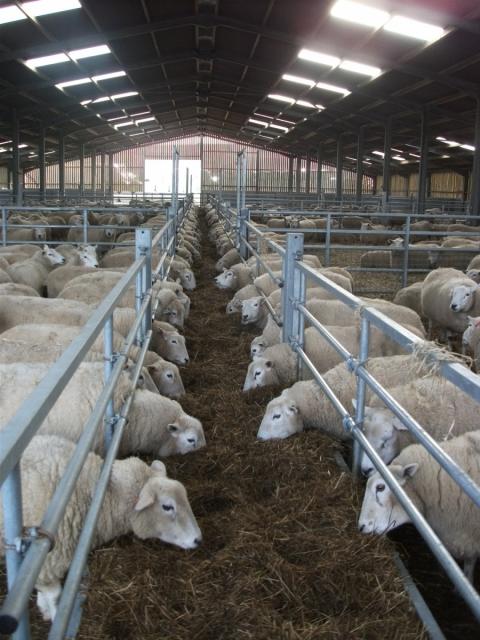As ewes approach lambing, their nutritional demands should be met by tailored rations based on analysed forages.
To ensure rations are targeted specifically for ewes in late pregnancy, farmers are being encouraged to have their forages analysed, especially baled silage. Silage analysis is crucial to help optimise sheep performance and quality of the feed, says leading sheep consultant Lesley Stubbings.
She said: “Analysing silage is absolutely critical because if you just go in blind you don’t know how much nutrition is in each mouthful, or even how many mouthfuls there actually are, because the better the silage, the more the ewes will eat.”
Once the specifications of the forage are known, rations can be created according to its protein and energy. Ewes in late pregnancy require grass silage with a high ME (Metabolisable energy), of 11MJ and above, and crude protein of between 15-17%.
When calculating how much to feed, farmers should pay attention to the analysis and tailor any supplements to match the silage. In late pregnancy, dry matter intake should by 2% of the ewes’ bodyweight.
Lesley says it is important when creating rations that silage is used as the main component and minimal amounts of concentrates are added.
She adds: “We want to get as much as we can out of the forage. We know the ewes’ requirements so when we know the quality of the silage, we can then tailor their rations with a minimal amount of the right supplement. Many people do it the other way round, but sheep are ruminants and they will perform better if you prioritise the forage and allow the rumen to do its job.”
As well as reducing input costs by cutting down on the amount of concentrate feeds used, increasing the amount of forage in a ration can have health benefits, such as reduced cases of acidosis. Since they started having their silage analysed two years ago, Ben Anthony and Diana Fairclough, of Frowen Farm, Login, Whitland, say they have seen numerous health benefits.
Ben says: “We have very few prolapse problems now compared to what we used to. The ewes have got plenty of milk too and the quality of the colostrum is better. We used to inject for joint ill at birth, but the problem has been eliminated through the quality of the colostrum.”
Ben and Diana have also made significant savings on bought-in feed.
“Since we started analysing our silage, we switched to a higher quality cake and are only using about half the amount that we used to,” adds Ben. “So although we pay more per tonne for the feed, we are saving money because we use a lot less tonnage.”
Farming Connect are holding a series of events in February focusing on ewe nutrition. Topics will include focussing on meeting the ewe’s needs and maximising lamb performance, minimising lamb losses and managing ewes in different levels of condition. Strategies to cope with waterlogged fields and planning spring grazing will also be discussed. For more information, please contact your Farming Connect Local Development Officer.

